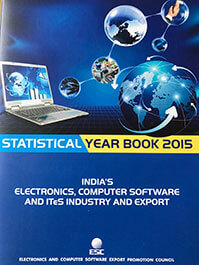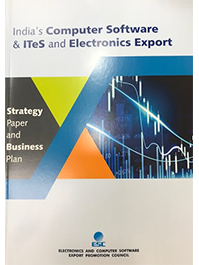GOODS AND SERVICE TAX (GST) IN INDIA
Quick Links
- ANALYSIS OF THE UNION BUDGET 2023-24
- Highlights of Union Budget 2023-24
- Remission of Duties and Taxes on Exported Products (RoDTEP)
- e-Registration-Cum Membership Certificate (RCMC)
- Import Export Code (IEC)
- All Industry Duty Drawback Rates
- Certificate of Origin
- Useful Link
- Goods And Service Tax (GST) In India
- HS Codes
- How to Export & Import
- Incentive Schemes of MEITY
- Key Highlights for Foreign Trade Policy 2023
- DGFT notifies Foreign Trade Policy, 2023
- DGFT notifies the Handbook of Procedures, 2023
- Help Desk
GOODS AND SERVICE TAX (GST) IN INDIA ( EXPORTS OF GOODS / SERVICES UNDER GST REGIME )
The following are the salient features of the proposed GST system:
- The power to make laws in respect of supplies in the course of inter-state trade or commerce will remain with the central government. The states will have the right to levy GST on intrastate transactions, including on services.
- The administration of GST will be the responsibility of the GST Council, which will be the apex policy-making body for GST. Members of GST Council will comprise central and state ministers in charge of the finance portfolio.
- The threshold for levy of GST is a turnover of Rs. 1 million. For a taxpayer who conducts business in a northeastern state of India the threshold is Rs. 500,000.
- The central government will levy IGST on inter-state supply of goods and services. Import of goods will be subject to basic customs duty and IGST.
- GST is defined as any tax on supply of goods and services (other than on alcohol for human consumption).
- Central taxes such as central excise duty, additional excise duty, service tax, additional custom duty and special additional duty, as well as state-level taxes such as VAT or sales tax, central sales tax, entertainment tax, entry tax, purchase tax, luxury tax and octroi will be subsumed in GST.
- A provision will be made for removing imposition of entry tax/ octroi across India.
- Entertainment tax, imposed by states on movies, theatre, etc., will be subsumed in GST, but taxes on entertainment at panchayat, municipality or district level will continue.
- Stamp duties, typically imposed on legal agreements by states, will continue to be levied.
- The key benefits associated with GST are: Offers a wider tax base, necessary for lowering tax rates and eliminating classification disputes, Eliminates the multiplicity of taxes and their cascading effects, Rationalizes the tax structure and simplifies compliance procedures and Automates compliance procedures to reduce errors and increase efficiency
GST would be levied on the basis of the destination principle. Exports would be zero-rated, and imports would attract tax in the same manner as domestic goods and services. In addition to the IGST in respect of supply of goods, an additional tax of up to 1% has been proposed to be levied by the central government. The revenue from this tax is to be assigned to the origin states. This tax is proposed to be levied for the first two years or a longer period, as recommended by the GST Council.
With GST, it is anticipated that the tax base will be comprehensive, as virtually all goods and services will be taxable, with minimum exemptions. GST would bring in a modern tax system to ensure efficient and effective tax administration. It will bring in greater transparency and strengthen monitoring, thus making tax evasion difficult. While the process of implementation of GST unfolds in the next few months, it is important for industry to understand the impact and opportunities offered by this reform. GST will affect all industries, irrespective of the sector. It will impact the entire value chain of operations, namely procurement, manufacturing, distribution, warehousing, sales and pricing.
The GST Council shall make recommendations to the Union and States on the taxes, cesses and surcharges levied by the Centre, the States and the local bodies which may be subsumed in the GST.
The current Indian government has an aim of increasing the output and the quality of exports from India as portrayed by the “Make in India” policy, and the many tax benefits provided to the exporters. GST rolled out on July 1 and yet there is still some ambiguity among the exporters on the possible impact of the new regime on this industry. Traders want to know how GST will affect the products exported, and the amount of tax paid on the raw material/input used. To erase this confusion, the Indian government has shared a set of notifications and guidance note for the public on 28th June 2017 regarding the applicability of CGST, SGST, UTGST and cess and GST rates.
GST on Exports : The export of goods or services is considered as a zero-rated supply. GST will not be levied on export of any kind of goods or services.
A duty drawback was provided under the previous laws for the tax paid on inputs for the export of exempted goods. Claiming the duty drawback was a cumbersome process. Under GST, the duty drawback would only be available for the customs duty paid on imported inputs or central excise paid on certain petroleum or tobacco products used as inputs or fuel for captive power generation.There was some confusion surrounding the refund of the tax paid by exporters on the inputs. A guidance note relating to the above issue was released by the Indian government which has helped in clearing doubts regarding the claim of input tax credit on zero-rated exports. An exporter dealing in zero-rated goods under GST can claim a refund for zero-rated supplies as per the following options :
Option 1: Supply goods or services, or both, under bond or Letter of Undertaking, subject to such conditions, safeguards and procedure as may be prescribed, without payment of integrated tax, and then claim a refund of unutilised input tax credit.
The exporter needs to file an application for refund on the common portal either directly or through the facilitation ccenternotified by the GST commissioner. An export manifest or report has to be filed under the Customs Act prior to filing an application for refund.
Option 2: Any exporter or United Nations or Embassy or other agencies/bodies as specified in section 55 who supplies goods or services, or both, after fulfilling certain conditions, safeguards and procedures as may be prescribed; and paying the IGST, can claim refund of such tax paid on the supplied goods or services, or both. The applicant has to apply for the refund as per the conditions specified under section 54 of the CGST Act.
An exporter is required to file a shipping bill for the goods being exported out of India. In this case, the shipping bill is considered as a deemed application for refund for the IGST paid. It would be deemed to have been filed only when the person in charge of the shipment files the export manifest or report, mentioning the number and date of the shipping bills.
Deemed Exports:
- Supply of goods by a registered person against Advance Authorisation
- Supply made to an Export oriented undertaking (EOU) or Hardware Technology Park unit, Software Technology Park unit, Biotechnology Park unit
- Supply of capital goods by a registered person against Export Promotion Capital Goods Authorisation
- Supply of gold by a bank or Public Sector Undertaking against Advance Authorisation as per Customs law
- Filing of returns under GST for the deemed export is to be done as per the general procedures provided for export under GST.
GST Rates for Goods / Services :
The Government has proposed a 4-tier tax structure for all goods and services under the slabs : 5%, 12%, 18% and 28%. After the recent revision of GST rates, these are the commodities that fall under the four tax slabs along with those that do not attract any tax.
Guide on Exports / Imports Tax Rates :https://www.icegate.gov.in/Webappl
For more information, please visit https://cbic-gst.gov.in/
Feedback Form
@ 2022 Copyright. All rights reserved.










